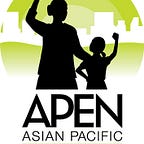It’s fire season and this year, we’re facing one of the worst droughts in California’s history. Fires are already blazing in some parts of the state and we’re once again preparing for mass power shutoffs.
Here are 5 things you can do to make sure your community is ready and resourced for this year’s fire season:
1. Assess your risk: Figure out what risks you’re preparing for. Potential evacuation from fires in your community? High levels of toxic wildfire smoke?
- Check the California Public Utilities Commission’s fire threat map to see your community’s fire risk level. You can also get real time updates on where fires are happening on CalFire’s Twitter account.
- If you’re preparing for wildfire smoke, keep in mind that wildfire smoke often contains chemicals from burning buildings, appliances, and cars. Elders, children, and people with heart or lung diseases (like asthma) are at higher risk from wildfire smoke. For real-time air quality monitoring, check PurpleAir or AirNow.gov.
2. Make a Plan: Make a plan for your household, and check in with friends and neighbors to collectively plan and share supplies.
- If you are planning for toxic wildfire smoke, get N95 or higher masks and air purifiers now, as supplies may be harder to come by when the air quality worsens. You can also make DIY air purifiers with a box fan and filters.
- Know your rights: In California, if the air quality index for PM 2.5 particles at your worksite is higher than 151, employers must implement a system for communicating wildfire smoke hazards in languages readily understandable by all employees, implement engineering controls like air filters in enclosed structures if possible, and change work procedures or schedules where practicable to reduce exposure. Employers must provide proper respiratory protection equipment like masks.
- If you’re planning for possible evacuation, make a plan. Put together an emergency supply kit. Consider what might be needed to help safely evacuate elders, young children, pets, and people who may require additional support. Set meetup points outside of the fire risk area and designate a family member or friend outside of the fire risk area to serve as the main point of contact in case phone and communication systems are overloaded.
3. Check in with friends and neighbors: Organized communities are resilient communities. Whether it’s supporting one another through a pandemic, responding to neighborhood emergencies, or preparing for climate disasters, we build resilience by showing up for one another.
- As wildfire seasons heats up, consider setting up a neighborhood or community phone tree to share information, supplies, and resources. Find out what needs or concerns people want to share with others, and what people want to offer.
- Check out this guide on door-knocking your neighbors. It was created for neighbors supporting each other during the coronavirus pandemic, but can easily be adapted to prepare for the risks that your community is facing.
4. Support mutual aid & direct aid efforts: Mutual aid and direct aid have been important ways for people to support one another through difficult times. Consider contributing to some groups that have organized mutual aid and direct aid around California wildfires:
Oakland:
- Mask Oakland
- East Oakland Collective
- The Village
- People’s Breakfast Oakland
- Disability Justice Culture Club
- Community Ready Corps
North Bay and Central Coast:
5. Join APEN in building climate resilient communities: We should be able to count on our public resources when we need them most. That’s why APEN is leading the charge in California to turn neighborhood institutions like schools, libraries, and community centers into resilience hubs where people can go to charge their devices, refrigerate food or medicine, and access resources before, during, and after disasters.
We are calling on the state of California to invest in creating resilience hubs across the state — starting in the neighborhoods with the fewest resources who are often the first and worst hit by wildfires, smoke, blackouts and heat. To win these investments, we need thousands of Californians to stand up and make your voices heard. Sign up to join us.
** This guide is available in Chinese here.
*** For a more detailed resource guide, check out this compilation of community resources by Claudia Leung.
